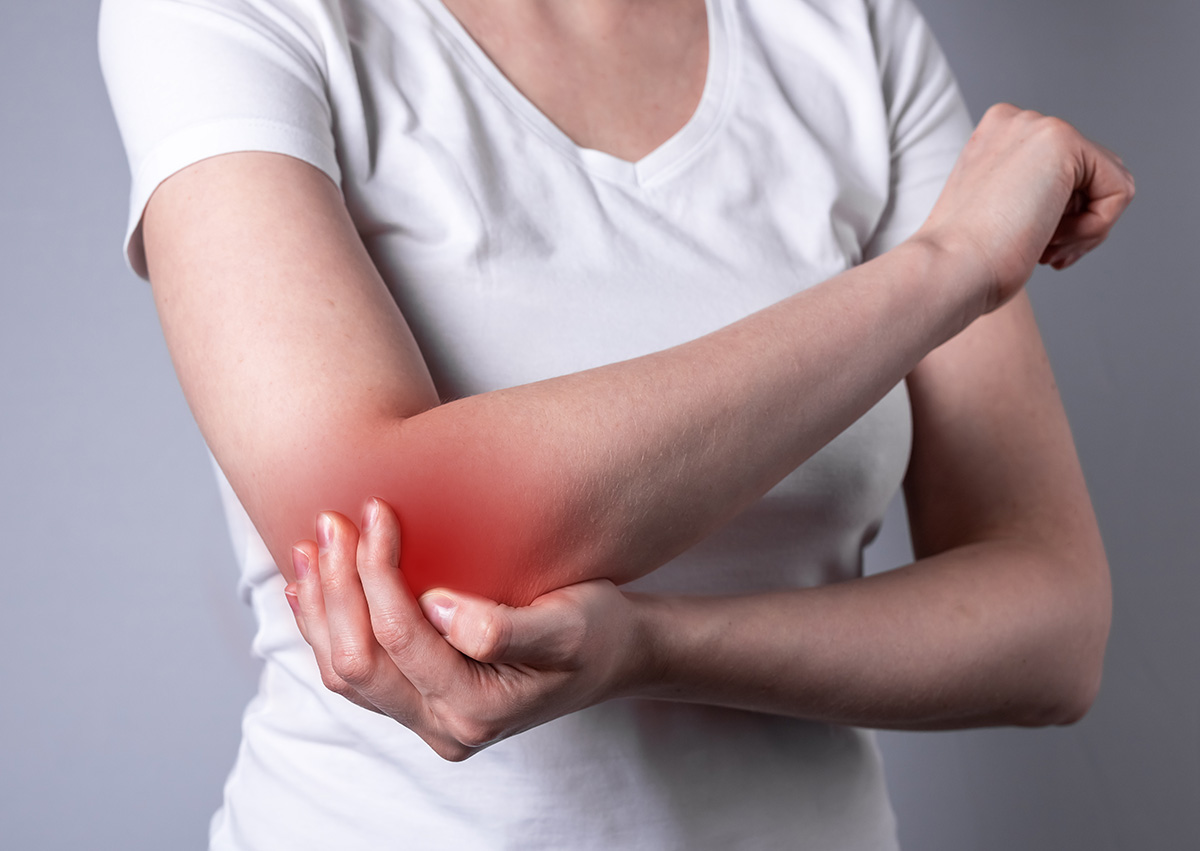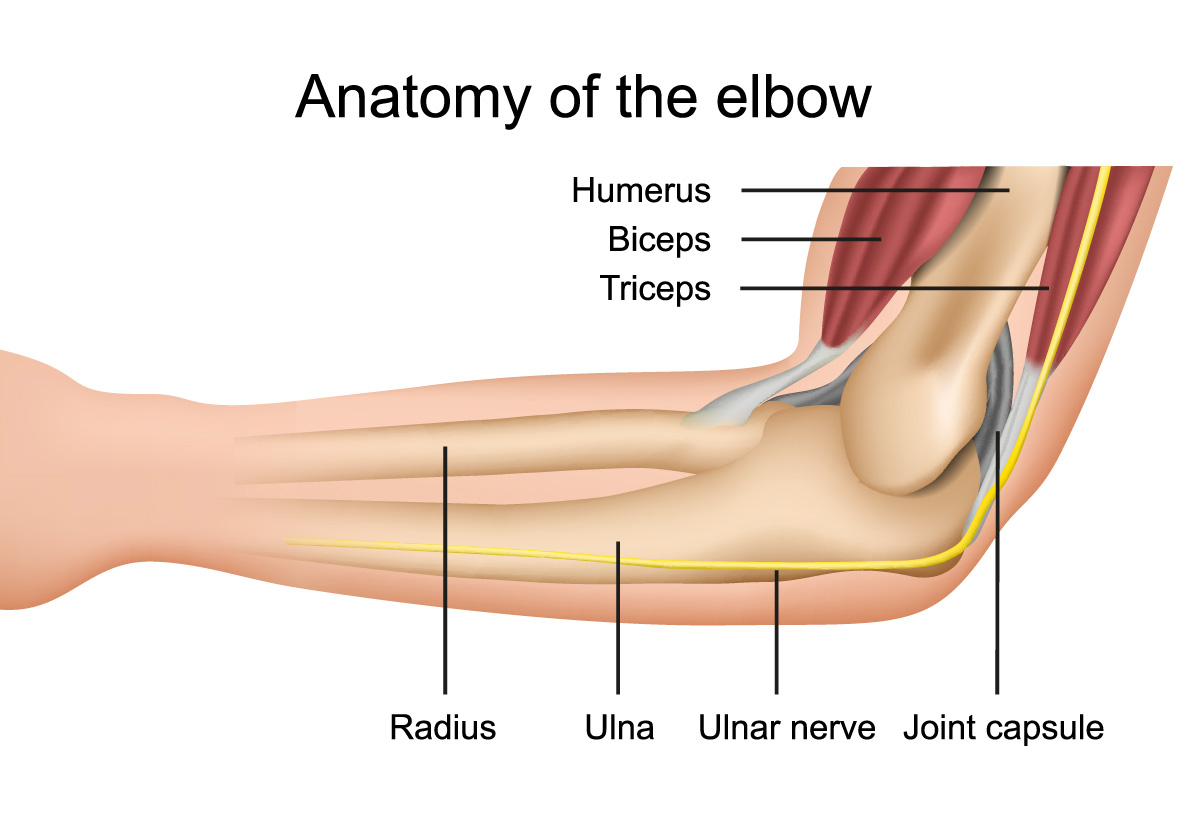Elbow Popping, Cracking, and Pain
If you’ve ever bent your elbow and heard a pop, crackle, or grinding sound, you’re not alone. These sounds are surprisingly common and, in many cases, harmless. However, when popping is accompanied by pain or swelling, it might indicate an underlying issue. Understanding the anatomy of the elbow, the potential causes of a popping sound, and treatments can help you decide when to seek care from a doctor.

Anatomy of the Elbow
Before we jump into answering the question “why does my elbow pop?” we need to understand the anatomy of the elbow.
The elbow joint includes the humerus (upper arm), ulna, and radius (forearm bones). Misalignment or wear on these bones can lead to popping sounds, often linked to arthritis or loose bone fragments.
Ligaments stabilize the elbow joint, while muscles control movement. Tendons attaching these muscles can become inflamed with overuse, leading to tendinitis and popping or crackling sensations during motion.

Why does my elbow pop?
The popping or cracking sound you hear in your elbow is often caused by the release of small gas bubbles within the synovial fluid (the lubricating fluid in joints). As you move your elbow, these bubbles can collapse and burst, creating the audible popping sound. This is called cavitation, and it's generally a harmless event that doesn't usually require any medical attention.
However, in some cases, persistent elbow popping or cracking, especially when accompanied by pain, may indicate an underlying issue. Here are a few potential causes:
Tendinitis
Repetitive movements, such as those involved in sports or certain jobs, can irritate the tendons in the elbow, leading to inflammation (tendinitis). Popping or crackling may occur as the inflamed tendons rub over bones during movement.
Arthritis
Osteoarthritis and rheumatoid arthritis can affect the elbow, leading to cartilage loss and joint damage. As bones rub together, they can create crackling or popping sounds, often accompanied by stiffness or pain.
Loose Bodies
Injuries or joint degeneration can cause fragments of bone or cartilage to break off, becoming loose within the joint. These fragments may get caught during movement, causing popping or locking sensations.
Synovial Plica Syndrome
The plica, a fold in the joint lining, can thicken due to overuse or injury, leading to snapping or popping as it catches on structures within the elbow.
Elbow Bursitis
Elbow bursitis is a swelling of a fluid-filled sac in the back of your elbow. This sac is called the “olecranon bursa.” The swelling can cause a grinding sound or feeling when you bend your elbow.
Tennis or Golfer’s Elbow
Overuse injuries like tennis elbow (lateral epicondylitis) or golfer’s elbow (medial epicondylitis) involve inflammation of the tendons attached to the elbow. These conditions may cause cracking sounds, pain, and weakness.
What are some initial treatment options for elbow pain?
If you elbow pops or crackles and you experience dull pain, you can try some conservative treatment options, including:
-
Rest: Avoiding activities that aggravate the elbow joint can help reduce inflammation and pain.
-
Ice: Applying ice packs to the affected area for 15-20 minutes, several times a day, can help reduce swelling and pain (learn more about R.I.C.E.).
-
Over-the-counter pain relievers: Non-steroidal anti-inflammatory drugs (NSAIDs) like ibuprofen or naproxen can help alleviate pain and inflammation.
When To See a Doctor
While occasional elbow popping is usually harmless, certain symptoms warrant a visit to a orthopaedic specialist. Persistent pain during arm movement, swelling around the joint, or a limited range of motion may indicate underlying conditions like inflammation, injury, or arthritis. Numbness or tingling in the fingers or hand could signal nerve compression or irritation. If you experience any of these symptoms, it’s prudent to seek medical advice for proper evaluation and treatment.
To determine the cause of elbow popping and pain, your doctor will typically begin with a physical exam to assess tenderness, swelling, or instability in the joint. Imaging tests such as X-rays or MRIs may be used to identify structural abnormalities like arthritis or loose bone fragments. Additionally, ultrasound can provide detailed insights into soft tissue issues, such as tendon or ligament problems. This comprehensive approach ensures an accurate diagnosis and guides appropriate treatment.
If you're experiencing persistent elbow popping, crackling, and pain, please contact the elbow specialists at CAO.
Not sure if you need to see a doctor? Call VantaStat to get connected to an orthopaedic specialist.

